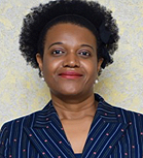Ultrasound Assessment of Placental Thickness and Its Correlation with Gestational Age in Normal Pregnancy in Maiduguri, Northeast Nigeria
Abstract
Background: Placenta is a highly vascularised organ that serve as medium of exchange of metabolic and gaseous product between maternal and fetal blood stream and produce hormone. Sonography is a safe and non-invasive tool used to evaluate placenta position, morphology and growth throughout pregnancy. Increase in normal placenta growth occurs throughout pregnancy, thus placenta dimensions such as thickness and volume can be measured.
Objective: To correlate the ultrasonographic placental thickness with gestational age in University of Maiduguri Teaching Hospital.
Methodology: This is a longitudinal study carried out among booked pregnant women for antenatal care with gestational age between 15 and 39 weeks, in the department of Obstetrics and Gynaecology, University of Maiduguri Teaching Hospital, Maiduguri between August and October 2017. The placenta was examined in the sagittal plane and anteroposterior thickness measured at the level of cord insertion. Placenta thickness was measured in millimetres (mm) from the echogenic plate to placenta myometrium interface and the myometrium. Data was verified, coded, and transferred into an IBM compatible PC and analysed using SPSS version 20, Chicago, IL, USA. Means, standard deviations and Pearson’s correlation Coefficient® were calculated and P-value of less than 0.05 was considered significant.
Conclusion: It was observed in this study that there is a positive correlation between placental thickness and gestational age. This finding showed that placental thickness may be an accurate parameter to estimate gestational age in singleton pregnancies in our environment.
Key words: Placenta thickness, Gestational age, UMTH, North-east Nigeria.













.png)

